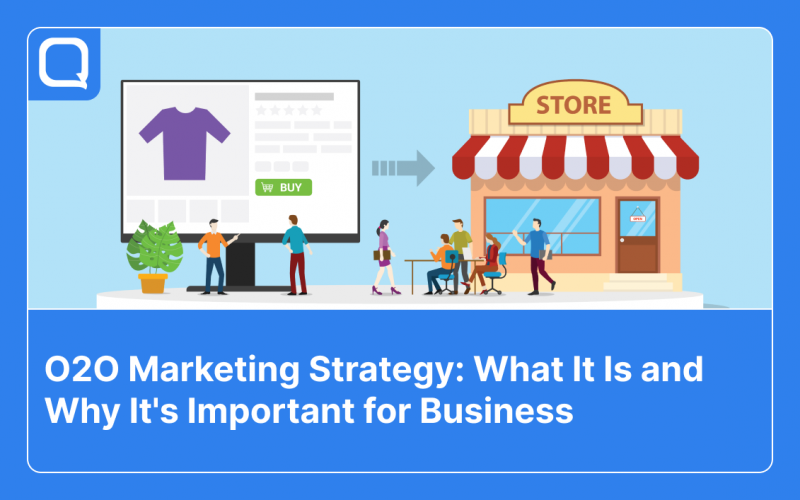The Online to Offline (O2O) marketing strategy is an innovative approach that effectively integrates online and offline channels, opening up new opportunities for businesses to meet customer needs. But how exactly does the O2O marketing strategy come into play?
In the past, businesses solely relied on physical stores as their primary means of operation. However, with the emergence of online-based businesses in recent years, this approach has shifted. Online businesses have gained an advantage due to lower operational costs, greater spatial flexibility, and having the ability to provide a wider range of products.
Initially, brick-and-mortar businesses saw online businesses as competitors while businesses operating in both online and offline platforms viewed them as separate entities. However, the O2O strategy is designed to seamlessly connect the online and offline worlds.
The O2O marketing strategy presents new opportunities for businesses to expand their market reach and enhance competitiveness. By adopting this approach, businesses can combine the strengths of online and offline channels to deliver more holistic customer experiences and create unique value propositions that will set them apart from competitors.
How Important is O2O Marketing Strategy for Businesses?
According to a report by McKinsey & Company, The Future of Retail: Winning Models for a New Era of Shopping (2019), retail businesses which implement O2O strategies can experience up to a 30% increase in sales and experience double in growth compared to businesses solely focusing on offline channels. However, the benefits of O2O marketing strategy extend beyond growing sales and offer additional positive impact for businesses including:
1. Reaching a Wider Market
With the O2O strategy, businesses can reach customers on both online and offline channels. By providing shopping options through both channels, businesses can cater to diverse shopping preferences. Some customers may prefer online shopping while others prefer the physical store experience. By offering both options, businesses can reach customers with varying preferences.
This opens up opportunities to reach customers in different geographic regions and expand market share for businesses.
2. Higher Conversion Potential
By directing customers from online platforms to physical stores, businesses can create opportunities to convert customers’ interest or purchase intent into actual transactions. This can be achieved through personalized interactions, exclusive offers, or enhanced purchasing experiences in both physical and online environments. This approach has the potential to optimize sales potential and drive business growth.
3. Competitive Advantage
The O2O strategy provides a competitive advantage for businesses which effectively implement it. Businesses which deliver a holistic customer experience and are able to meet customers’ needs on both online and offline channels have a higher level of competitiveness compared to competitors focusing on only one channel. The integrated experience offered by this strategy results in higher customer satisfaction and a competitive edge, as businesses can provide a superior experience compared to their competitors.
Moreover, this marketing strategy enables businesses to collect customer data from both online and offline channels. By integrating and analyzing this data, businesses can gain deeper insights into customer behavior and preferences. This information can be used to develop more effective marketing strategies, customize products and service offerings, and provide personalized experiences to customers. Leveraging on customer data provides a competitive advantage as businesses can deliver more relevant experiences and better meet customer needs compared to their competitors.
With these benefits in mind, implementing the O2O marketing strategy is crucial for businesses seeking to enhance their competitive edge, expand market reach, and create superior customer experiences.
Four O2O Strategy Implementations for Businesses
1. Consistent Branding Across Channels
An essential aspect of implementing the O2O strategy is the ability for brands to build consistent branding across online and offline channels. This is crucial for brands to leave a strong impression on customers. Consistent branding can be achieved by ensuring visual elements, brand messages, and values are consistent across all channels. This allows customers to enjoy a unified and cohesive branding experience, whether they interact with the business online or offline.
2. Encouraging Virtual Customers to Visit Offline Stores
Connecting online and offline channels can be achieved by inviting customers who contact your brand’s online platforms to visit physical stores either to pick up their purchases or access services. For example, businesses can offer options such as “in-store pickup” or “nearest branch pickup” for online orders. This can increase customer traffic to physical stores, creating additional opportunities for direct interactions and allows customers to experience products or services firsthand before making a purchase. Alternatively, businesses can provide online vouchers or coupons that can be redeemed at physical stores. This approach can lead to benefits for the brands such as acquiring new customers, increasing sales, and generating greater profits.
3. Promoting Offline Events On Virtual Platforms
Organizing offline events, such as product launches, exhibitions, or workshops, can be an effective way to enhance brand awareness and engage customers. In implementing the O2O strategy, businesses can leverage on the power of online channels to promote these events. By utilizing social media platforms, websites, or WhatsApp marketing, businesses can reach wider audiences and invite them to attend offline events. This creates synergy between online and offline channels, expanding the reach and impact of these events.
4. Creating a Loyalty Program with Online Call-to-Action for Products
With the O2O strategy, businesses can enhance the effectiveness of their loyalty programs by adding online call-to-action elements to look at physical products or packaging. For example, businesses can provide promo codes or special links that direct customers to sign up or participate in loyalty programs through online platforms. This allows businesses to gather customer information, expand their loyalty database, and provide rewards or additional benefits to actively engaged customers across both online and offline channels.
Now, businesses can also run loyalty programs through their WhatsApp Business accounts with the support of WhatsApp Business API. After making a purchase at a physical store, customers can be directed to the WhatsApp Business account. Through WhatsApp Business API, businesses can track incoming messages as well.
Implement O2O Strategy with Qiscus Omnichannel Dashboard
Interested in implementing an optimized O2O strategy? Let’s leverage on the features of WhatsApp Business API. With 2 billion users, WhatsApp can support businesses by connecting their market reach with customers.
Furthermore, by integrating WhatsApp Business API with Qiscus Omnichannel Dashboard, businesses can easily track engagements, analyze metrics, and identify message sources to further optimize their O2O strategies.
Are you interested in viewing a WhatsApp Business API demo with our team? Contact us here to kickstart your O2O strategy!



